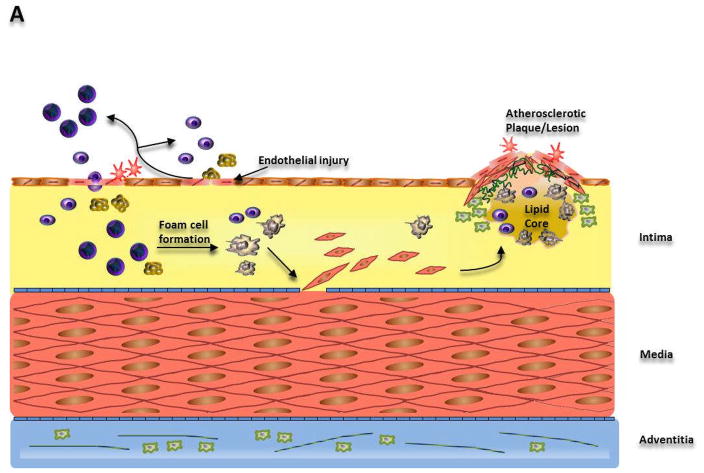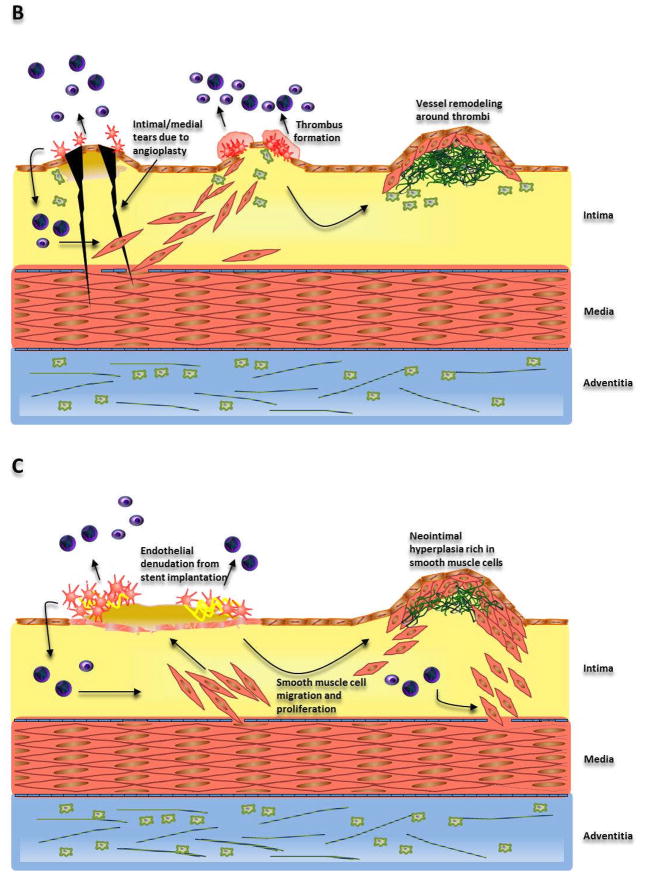Fig. 1.

Illustration of the mechanisms leading to (A) Atherosclerosis, (B) Restenosis due to angioplasty and (C) in-stent restenosis.
(A) Dysfunction of endothelial cells triggers a response-to-injury mechanism increasing monocyte and lymphocyte adherence to the endothelium. Interaction of these cells with the endothelium leads to recruitment of more monocytes/macrophages, lymphocytes, platelets, and smooth muscle cells. Lipid accumulation produces foam cells, which along with lymphocytes and smooth muscle cells drives plaque/lesion formation. (B) Angioplasty causes intimal and medial tears which attract platelets and result in thrombi formation. Smooth muscle cells and collagen then synthesized as a result of the response-to-injury mechanism lead to vessel remodeling. (C) Stent implantation causes endothelial denudation and crushing of the plaque triggering an inflammatory response. Eventually, smooth muscle cell migration and proliferation leads to formation of neointima.


